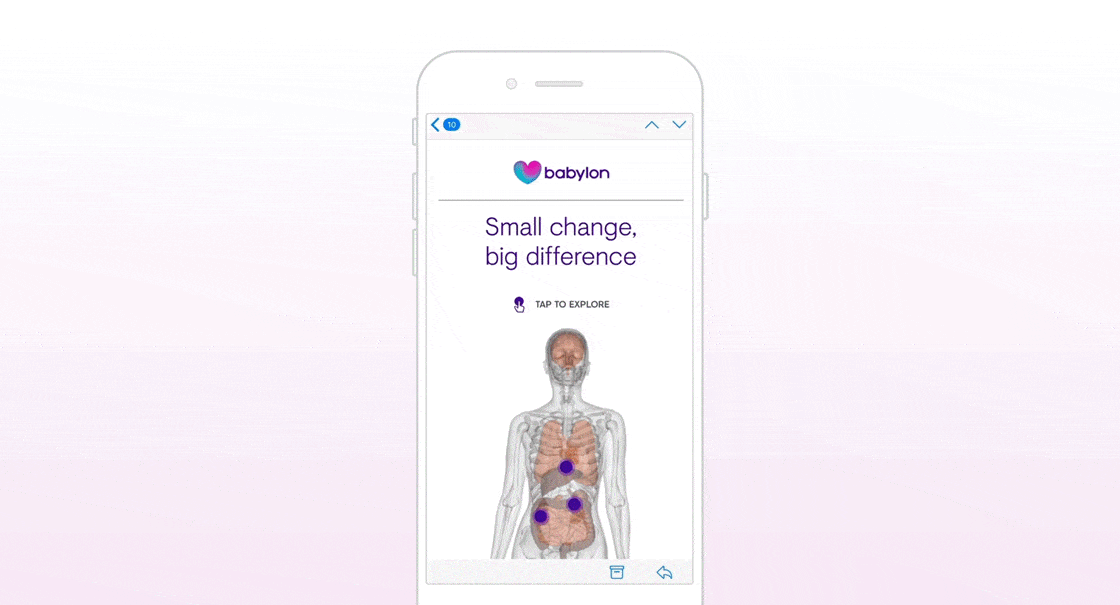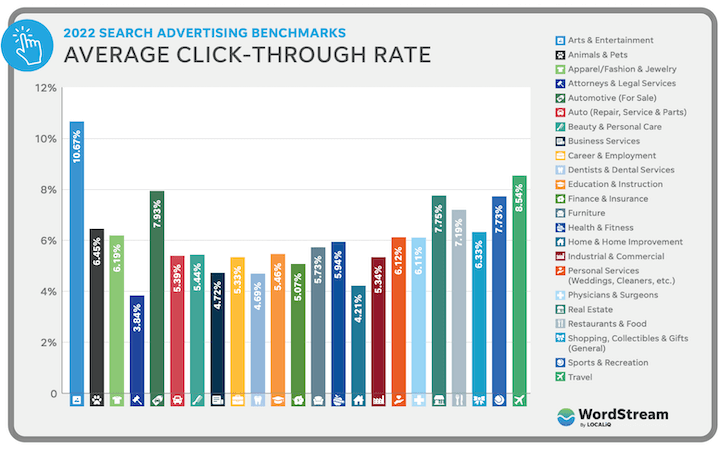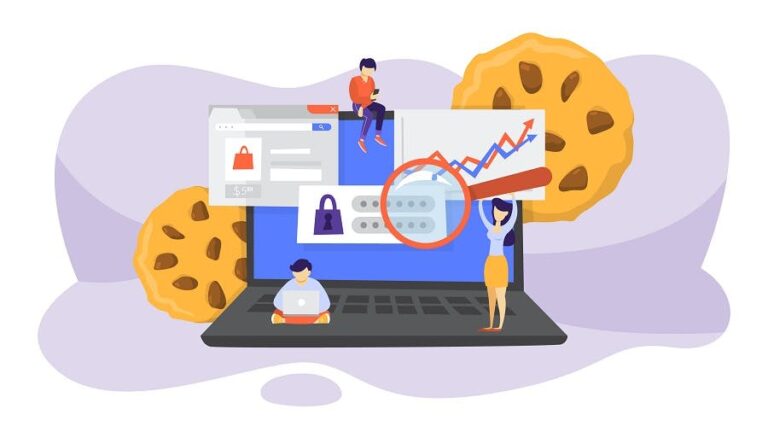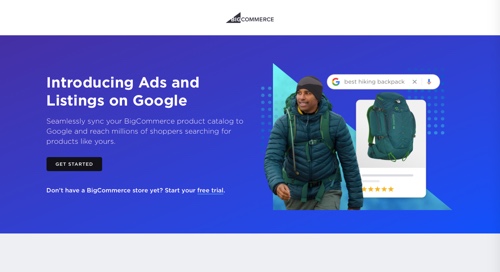
On the back of this positive experience, Babylon adopted AMP for email as one of its regular tools, and “every time we use it, we always see that increase in clickthroughs,” said Allan.
“Someone might only have experience in one area, but if they’re open to working collaboratively, that would work; but if someone isn’t open to it, then it just won’t fit. I think it’s about who you recruit, and setting expectations about that as well.”
A whole-organisation approach to customer engagement
Allan emphasised that being open to collaboration and trying things that might be outside of everyone’s comfort zone are important qualities for enabling this type of co-operative work, as well as maintaining “a real focus on the end user – not being siloed in teams, or channels, but thinking, ‘Okay, how is this going to look to the end user?’ and mapping it all out.” She also acknowledged that implementing a collaborative working culture to begin with in an organisation that is structurally siloed can be difficult, and can often meet with internal resistance from employees if they are unwilling to try something new.
“Our journey needs to be flexible enough to accommodate that.”
Babylon Health works to avoid these silos itself by having teams own journeys rather than channels. For example, said Allan, the CRM team might own a six-month re-engagement life cycle that covers push notifications, in-app notifications, email and SMS – “whatever we need to re-engage people.” But her team may also be heavily involved with journeys that are owned by a different team and that draw data from a variety of sources; one team might be responsible for implementing the messaging for that journey, but another will have ultimate responsibility for the experience.
“We’ve been working out how to use that more in the right place,” said Allan. “We use glossy marketing emails where we need them, and simpler emails where we just want to get the message across, and need someone to be able to read it on a very small screen with not much data available to them.” So far, the stripped-back, personalised emails have succeeded in increasing engagement by around 44%.
In-app messaging is useful for providing additional information when used in conjunction with push notifications, but can also be used to drive a specific action if the user is coming to the app independently. “It depends what you’re trying to do – it ranges from trying to get someone to directly take an action to that general brand-building, content marketing engagement piece,” Allan concluded.
Babylon Health is a private healthcare company that provides remote consultations with physicians, doctors and pharmacists as well as digital health services that can be accessed via an app. The brand uses customer engagement platform Braze to create personalised messaging and experiences for its users across various channels.
At Day Two of the Festival of Marketing: the Bottom Line, Babylon Health CMO Catherine Allan laid out the approach that the brand takes to customer engagement, how it is facilitated by collaboration across the organisation, and how messaging across different channels works together to smooth the customer journey.

The right messaging at the right time
For example, the CRM team might build in CRM prompts that will nudge the user if they stop at a certain point in their journey, and use front end data to track where they are in their journey. At the same time, the clinical operations team might be making calls out to the same user, while the product team will be creating messaging that signposts the app. “We know that our members are not going to move in a linear way through this journey – they could be doing various different actions at different points,” explained Allan.
The interactive version of Babylon’s AMP-powered Health Check email experience. Source: Braze.com case study
Another way that Babylon Health promotes collaboration is by setting company-wide objectives that individual teams contribute towards, which often requires teams to assist each other with achieving their goals.
However, bells and whistles aren’t always the best approach for marketing messaging, or the approach that will necessarily deliver results, depending on what target demographic Babylon is trying to reach. In contrast to the rich AMP email experience, Babylon has been experimenting with very simple emails that use dynamic personalisation to deliver targeted messaging to audiences in the United States who may have poor internet access, older devices or low bandwidth.
Braze’s Georgia Harrison added that brands need to think about how they combine “push” and “pull” channels – “combining your outreach, high-urgency push or SMS with your in-product to continue that journey”. She noted as well that there is increasingly a blurring of “typical customer engagement channels”, which are external to the product, and internal product messaging like in-app messaging. “Having more control in the hands of marketing and customer engagement teams directly in the product can really super-charge efforts,” she said.
The team developed an email experience where users could interact with a ‘digital twin’ that they had created in the app’s Health Check experience, rotating it and clicking on different organs to access health advice about that part of the body. This generated a 56% increase in email click-throughs when compared to the static version, which contained identical copy but was not interactive, instead displaying the organ information below a GIF of the digital twin.
At Day Two of the Festival of Marketing: The Bottom Line, Georgia Harrison, Senior Director of Customer Success EMEA at Braze, spoke to Catherine Allan, Associate Director of CRM at Babylon Health, and explored why Babylon’s approach to customer engagement has been so successful, why cross-channel engagement is so important, and what other companies can learn from its efforts.
Ultimately, a good multi-channel customer engagement strategy boils down to knowing which channel to deploy for which purpose, and understanding how they interact with the overall customer journey; in response to an audience question about which channels work best together, Allan said, “It depends what the objective of the campaign is.” Email has a great deal of “creative possibility” and is useful for brand engagement, content marketing, and “reminding people that we’re here, and to contact us when they need us”, whereas push notifications are most successful in getting people to return to the app to complete a specific action, such as, “It’s time to update your health check.”
Again, everything comes back to the end user: “It has to make sense to people, otherwise it just won’t work,” Allan summarised.
Allan talked about the results that the team has seen from experimenting with some new technologies and messaging formats, such as AMP for email, which allows marketers to include rich, interactive content within emails. Babylon adopted this new format very quickly and began experimenting with its capabilities, with the help and advice of an email and CRM specialist, ActionRocket.
“The interactivity definitely increased click-throughs, and we also had an uplift in completion rates for the health check,” said Allan. The check takes about ten minutes to complete, so having a higher proportion of users (20% higher, to be exact) complete the entire check was a significant achievement for the marketing team.







